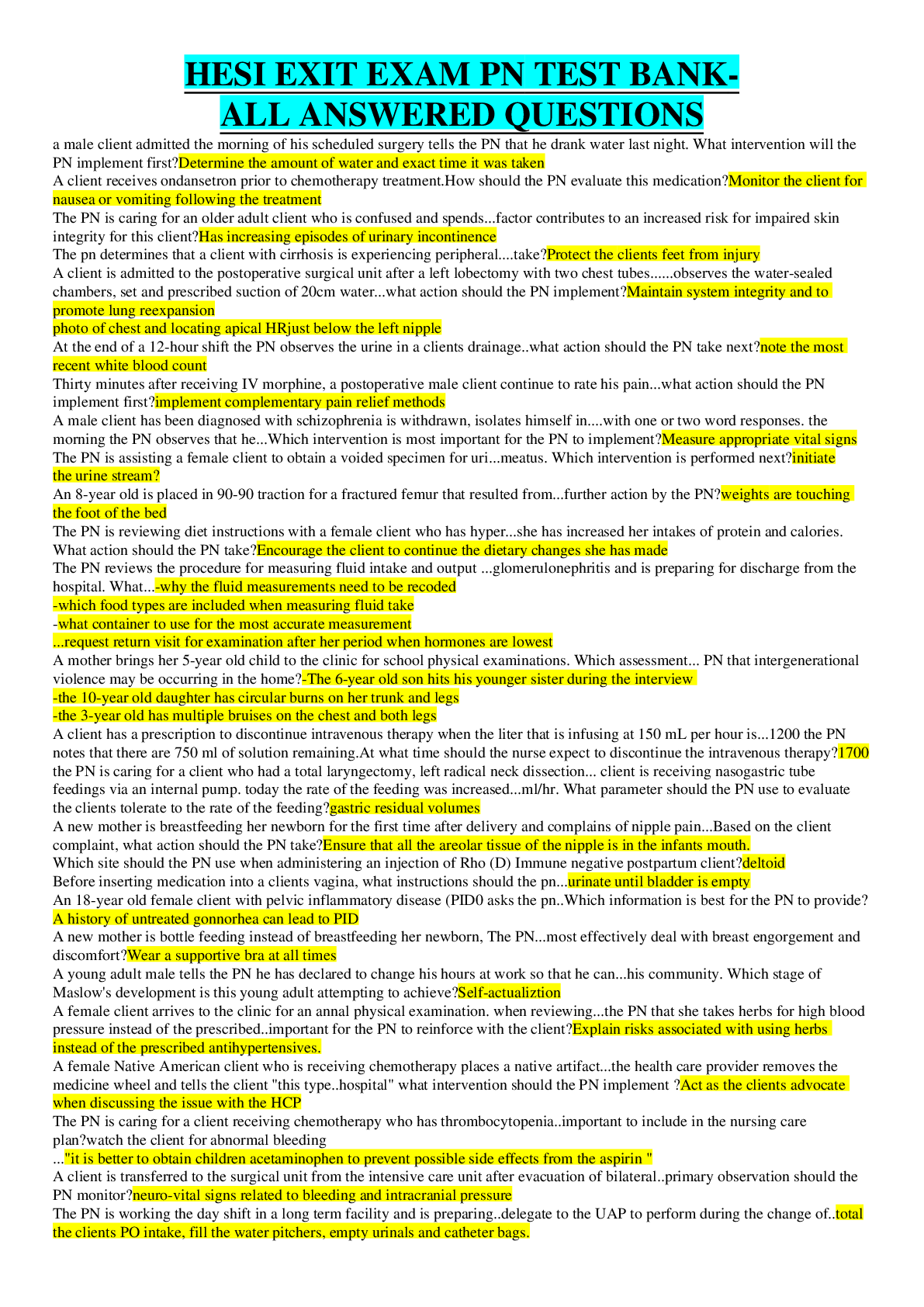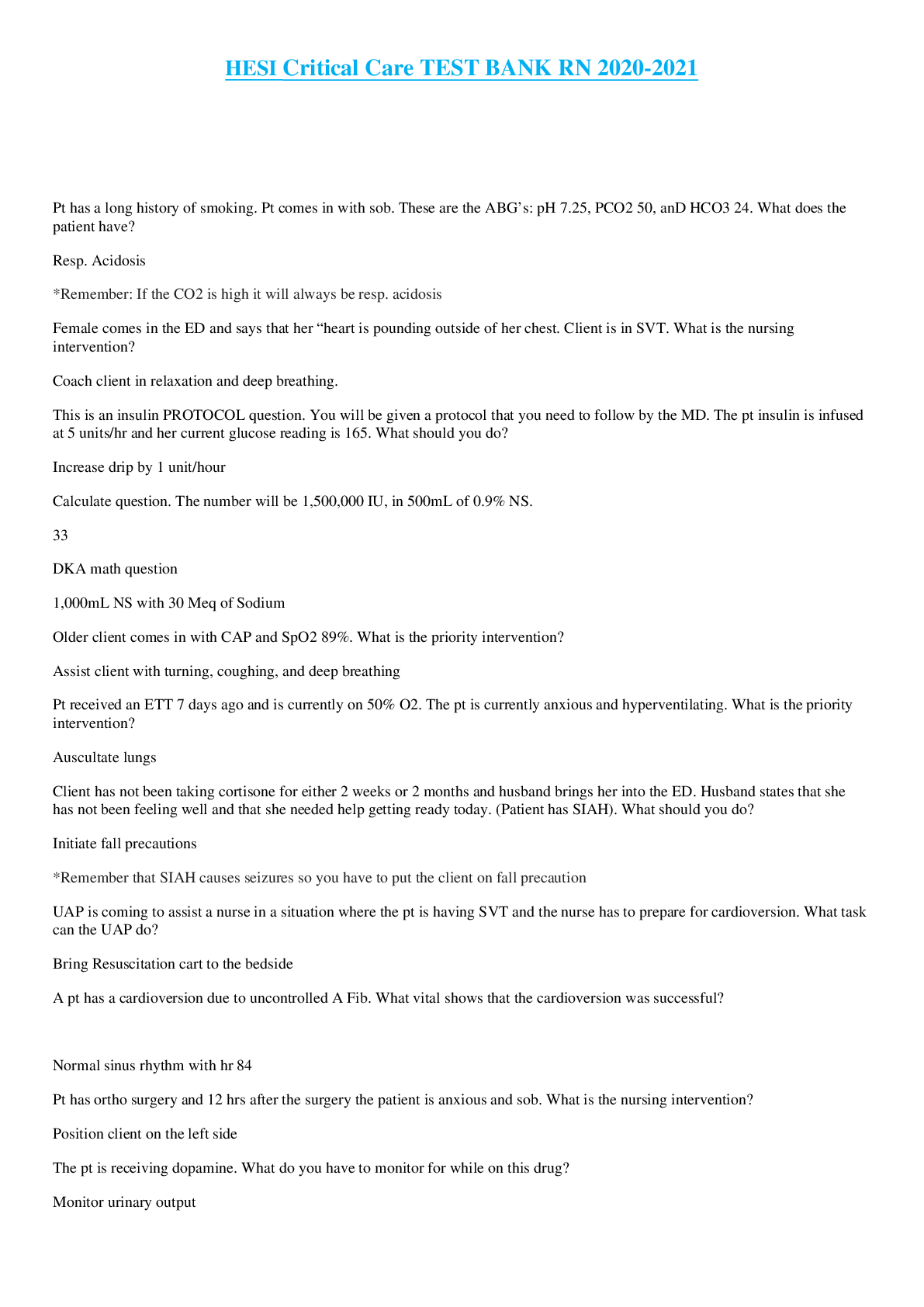*NURSING > HESI > Hesi Fundamentals Practice Test Evolve Practice Test ( 2021 latest update ) Q&A (All)
Hesi Fundamentals Practice Test Evolve Practice Test ( 2021 latest update ) Q&A
Document Content and Description Below
Hesi Fundamentals Practice Test Evolve Practice Test ( 2021 latest update ) Q&A Hesi Fundamentals Practice Test Evolve Practice Test – Fundamentals 1. The nurse is instructing a client with high cho... lesterol about diet and life style modification. What comment from the client indicates that the teaching has been effective? A) If I exercise at least two times weekly for one hour, I will lower my cholesterol. B) I need to avoid eating proteins, including red meat. C) I will limit my intake of beef to 4 ounces per week. D) My blood level of low density lipoproteins needs to increase. Correct answer(s): C 2. A client with acute hemorrhagic anemia is to receive four units of packed RBCs (red blood cells) as rapidly as possible. Which intervention is most important for the nurse to implement? A) Obtain the pre-transfusion hemoglobin level. B) Prime the tubing and prepare a blood pump set-up. C) Monitor vital signs q15 minutes for the first hour. D) Ensure the accuracy of the blood type match. Correct answer(s): D 3. The nurse observes an unlicensed assistive personnel (UAP) taking a client's blood pressure with a cuff that is too small, but the blood pressure reading obtained is within the client's usual range. What action is most important for the nurse to implement? A) Tell the UAP to use a larger cuff at the next scheduled assessment. B) Reassess the client's blood pressure using a larger cuff. C) Have the unit educator review this procedure with the UAPs. D) Teach the UAP the correct technique for assessing blood pressure. Correct answer(s): B 4. The nurse prepares a 1,000 ml IV of 5% dextrose and water to be infused over 8 hours. The infusion set delivers 10 drops per milliliter. The nurse should regulate the IV to administer approximately how many drops per minute? A) 80 B) 8 C) 21 D) 25 Correct answer(s): C 5. A client is to receive 10 mEq of KCl diluted in 250 ml of normal saline over 4 hours. At what rate should the nurse set the client's intravenous infusion pump? A) 13 ml/hour. B) 63 ml/hour. C) 80 ml/hour. D) 125 ml/hour. Correct answer(s): B 6. When conducting an admission assessment, the nurse should ask the client about the use of complimentary healing practices. Which statement is accurate regarding the use of these practices? A) Complimentary healing practices interfere with the efficacy of the medical model of treatment. B) Conventional medications are likely to interact with folk remedies and cause adverse effects. C) Many complimentary healing practices can be used in conjunction with conventional practices. D) Conventional medical practices will ultimately replace the use of complimentary healing practices. Correct answer(s): C 7. A client is to receive cimetidine (Tagamet) 300 mg q6h IVPB. The preparation arrives from the pharmacy diluted in 50 ml of 0.9% NaCl. The nurse plans to administer the IVPB dose over 20 minutes. For how many ml/hr should the infusion pump be set to deliver the secondary infusion? Correct answer(s): 150 8. The nurse is performing nasotracheal suctioning. After suctioning the client's trachea for fifteen seconds, large amounts of thick yellow secretions return. What action should the nurse implement next? A) Encourage the client to cough to help loosen secretions. B) Advise the client to increase the intake of oral fluids. C) Rotate the suction catheter to obtain any remaining secretions. D) Re-oxygenate the client before attempting to suction again. Correct answer(s): D 9. Which intervention is most important for the nurse to implement for a male client who is experiencing urinary retention? A) Apply a condom catheter. B) Apply a skin protectant. C) Encourage increased fluid intake. D) Assess for bladder distention. Correct answer(s): D 10. A young mother of three children complains of increased anxiety during her annual physical exam. What information should the nurse obtain first? A) Sexual activity patterns. B) Nutritional history. C) Leisure activities. D) Financial stressors. Correct answer(s): B 11. The healthcare provider prescribes the diuretic metolazone (Zaroxolyn) 7.5 mg PO. Zaroxolyn is available in 5 mg tablets. How much should the nurse plan to administer? A) ½ tablet. B) 1 tablet. C) 1½ tablets. D) 2 tablets. Correct answer(s): C 12. During a visit to the outpatient clinic, the nurse assesses a client with severe osteoarthritis using a goniometer. Which finding should the nurse expect to measure? A) Adequate venous blood flow to the lower extremities. B) Estimated amount of body fat by an underarm skinfold. C) Degree of flexion and extension of the client's knee joint. D) Change in the circumference of the joint in centimeters. Correct answer(s): C 13. A hospitalized male client is receiving nasogastric tube feedings via a small-bore tube and a continuous pump infusion. He reports that he had a bad bout of severe coughing a few minutes ago, but feels fine now. What action is best for the nurse to take? A) Record the coughing incident. No further action is required at this time. B) Stop the feeding, explain to the family why it is being stopped, and notify the healthcare provider. C) After clearing the tube with 30 ml of air, check the pH of fluid withdrawn from the tube. D) Inject 30 ml of air into the tube while auscultating the epigastrium for gurgling. Correct answer(s): C 14. An elderly resident of a long-term care facility is no longer able to perform self-care and is becoming progressively weaker. The resident previously requested that no resuscitative efforts be performed, and the family requests hospice care. What action should the nurse implement first? A) Reaffirm the client's desire for no resuscitative efforts. B) Transfer the client to a hospice inpatient facility. C) Prepare the family for the client's impending death. D) Notify the healthcare provider of the family's request. Correct answer(s): D 15. Which nutritional assessment data should the nurse collect to best reflect total muscle mass in an adolescent? A) Height in inches or centimeters. B) Weight in kilograms or pounds. C) Triceps skin fold thickness. D) Upper arm circumference. Correct answer(s): D 16. The nurse notices that the mother a 9-year-old Vietnamese child always looks at the floor when she talks to the nurse. What action should the nurse take? A) Talk directly to the child instead of the mother. B) Continue asking the mother questions about the child. C) Ask another nurse to interview the mother now. D) Tell the mother politely to look at you when answering. Correct answer(s): B 17. What is the most important reason for starting intravenous infusions in the upper extremities rather than the lower extremities of adults? A) It is more difficult to find a superficial vein in the feet and ankles. B) A decreased flow rate could result in the formation of a thrombosis. C) A cannulated extremity is more difficult to move when the leg or foot is used. D) Veins are located deep in the feet and ankles, resulting in a more painful procedure. Correct answer(s): B 18. Which snack food is best for the nurse to provide a client with myasthenia gravis who is at risk for altered nutritional status? A) Chocolate pudding. B) Graham crackers. C) Sugar free gelatin. D) Apple slices. Correct answer(s): A 19. An adult male client with a history of hypertension tells the nurse that he is tired of taking antihypertensive medications and is going to try spiritual meditation instead. What should be the nurse's first response? A) It is important that you continue your medication while learning to meditate. B) Spiritual meditation requires a time commitment of 15 to 20 minutes daily. C) Obtain your healthcare provider's permission before starting meditation. D) Complementary therapy and western medicine can be effective for you. Correct answer(s): A 20. Seconal 0.1 gram PRN at bedtime is prescribed to a client for rest. The scored tablets are labeled grain 1.5 per tablet. How many tablets should the nurse plan to administer? A) 0.5 tablet. B) 1 tablet. C) 1.5 tablets. D) 2 tablets. Correct answer(s): B 21. An African-American grandmother tells the nurse that her 4-year-old grandson is suffering with [Show More]
Last updated: 1 year ago
Preview 1 out of 19 pages
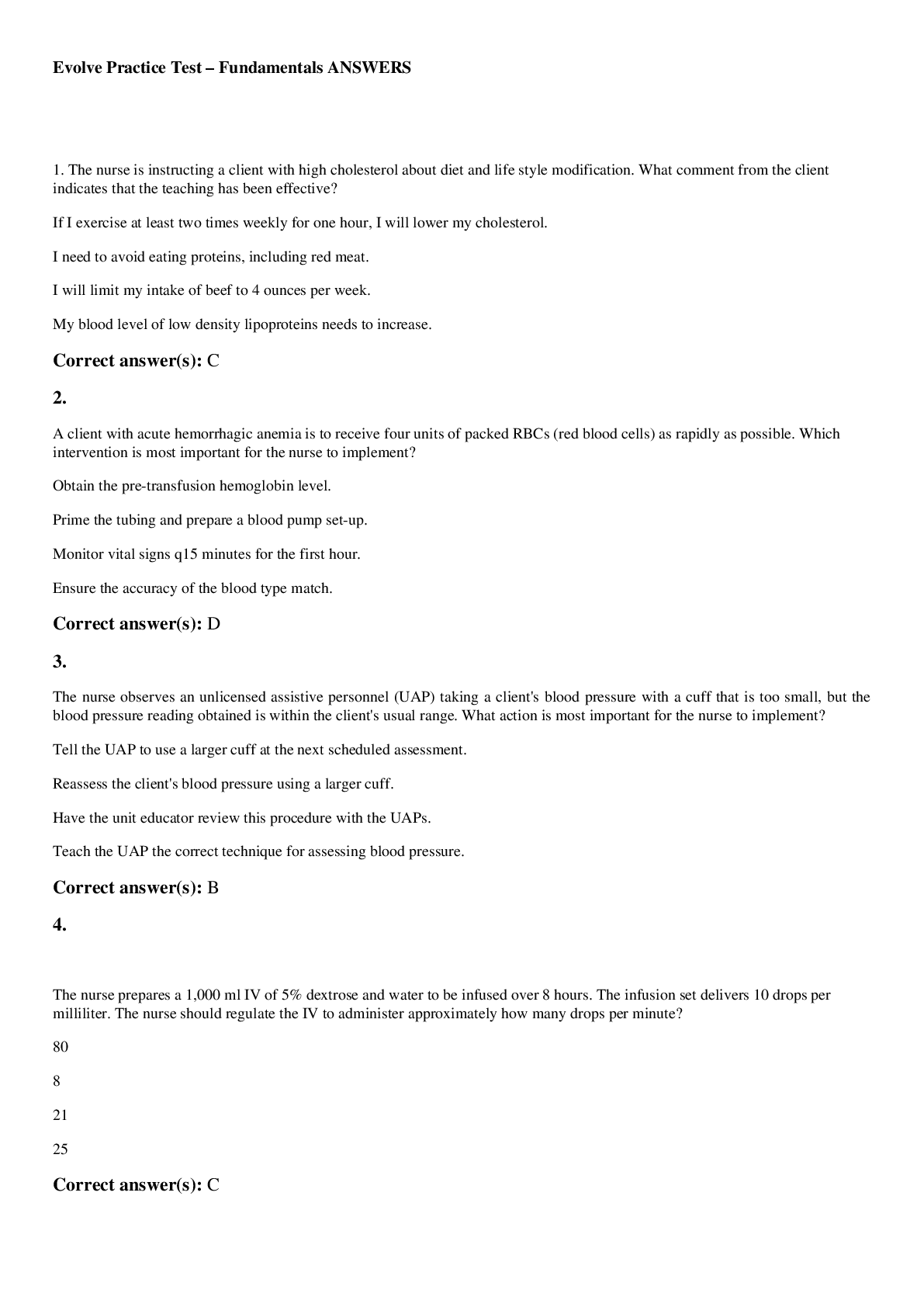
Reviews( 0 )
Document information
Connected school, study & course
About the document
Uploaded On
Nov 14, 2022
Number of pages
19
Written in
Additional information
This document has been written for:
Uploaded
Nov 14, 2022
Downloads
0
Views
37

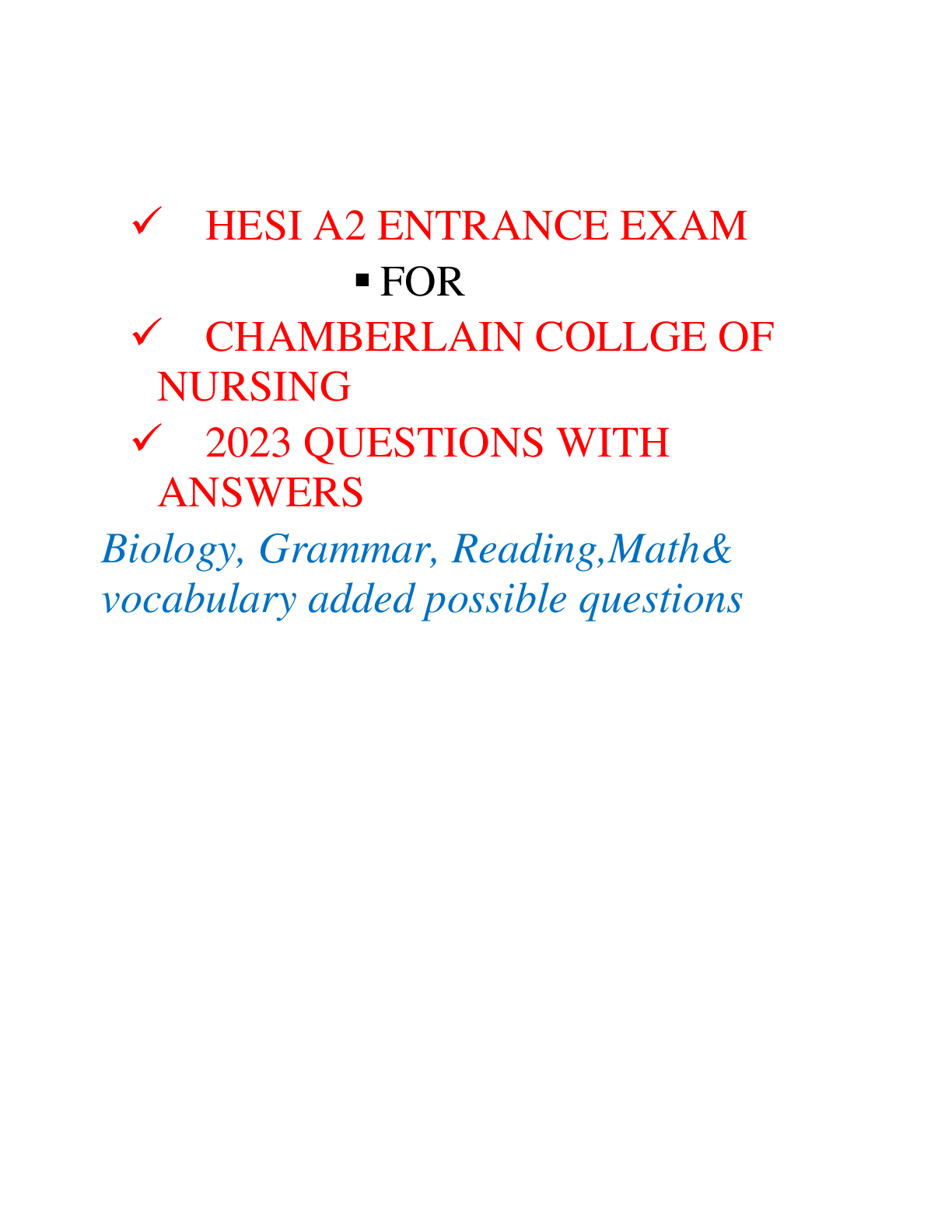
.png)
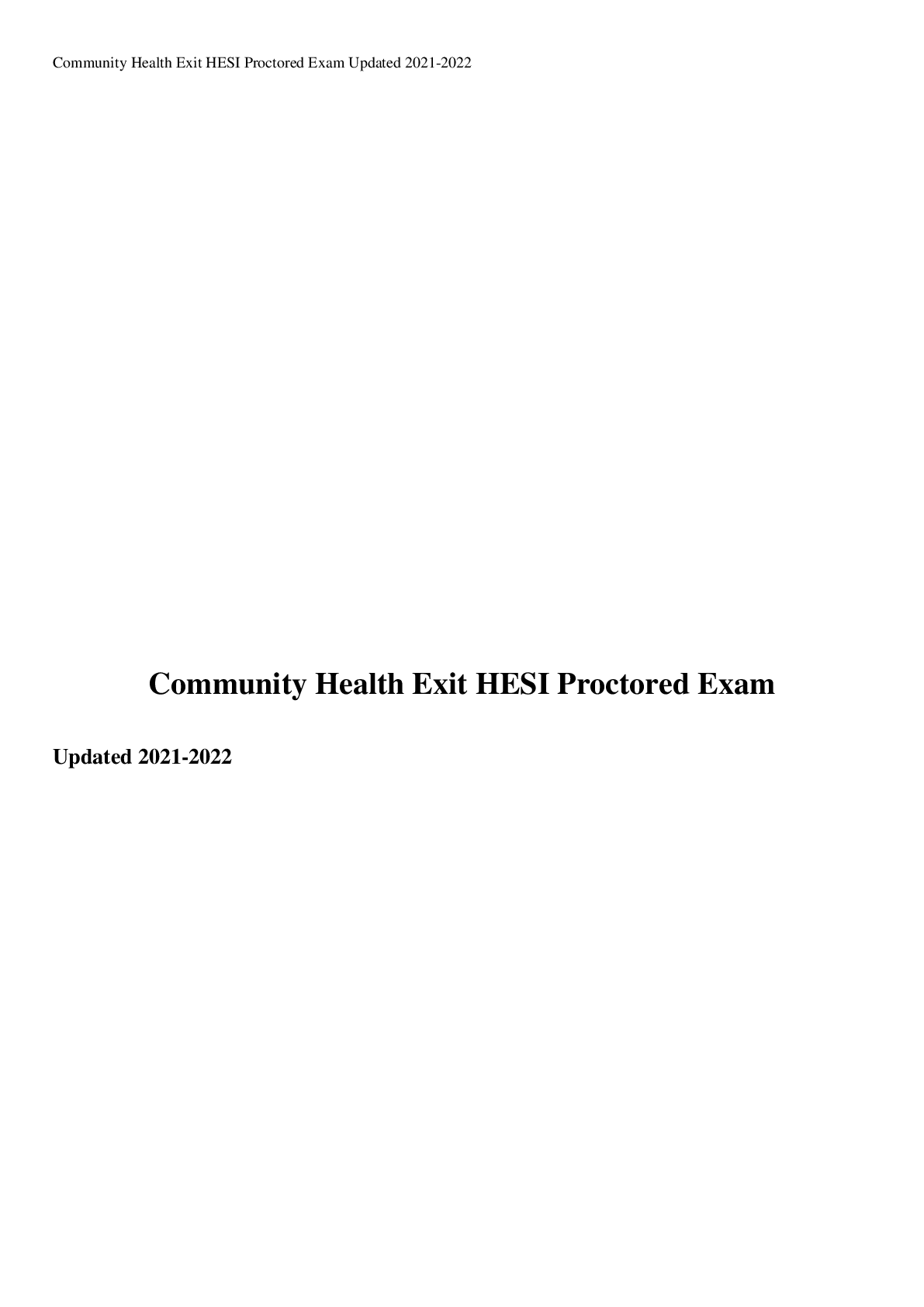
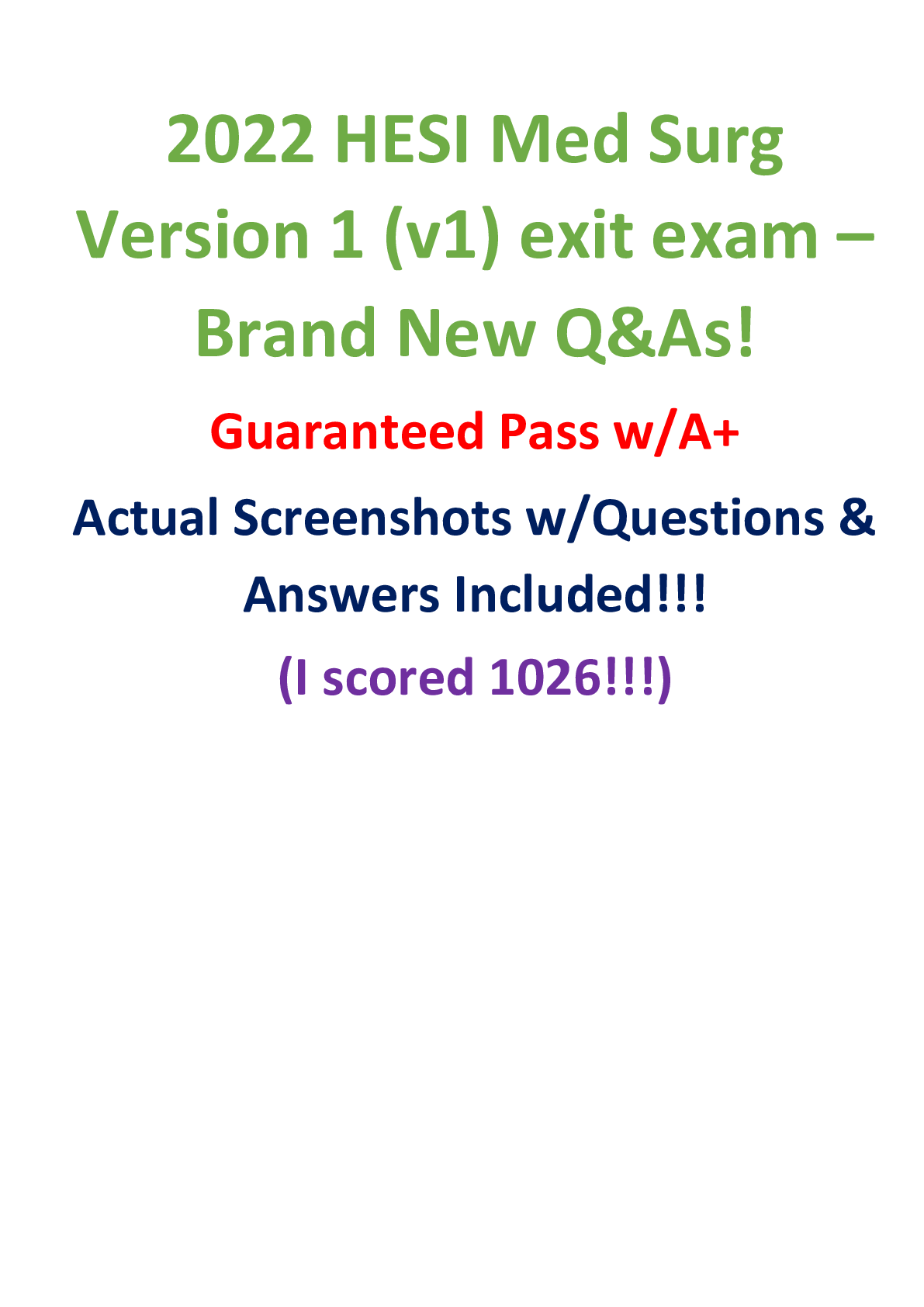

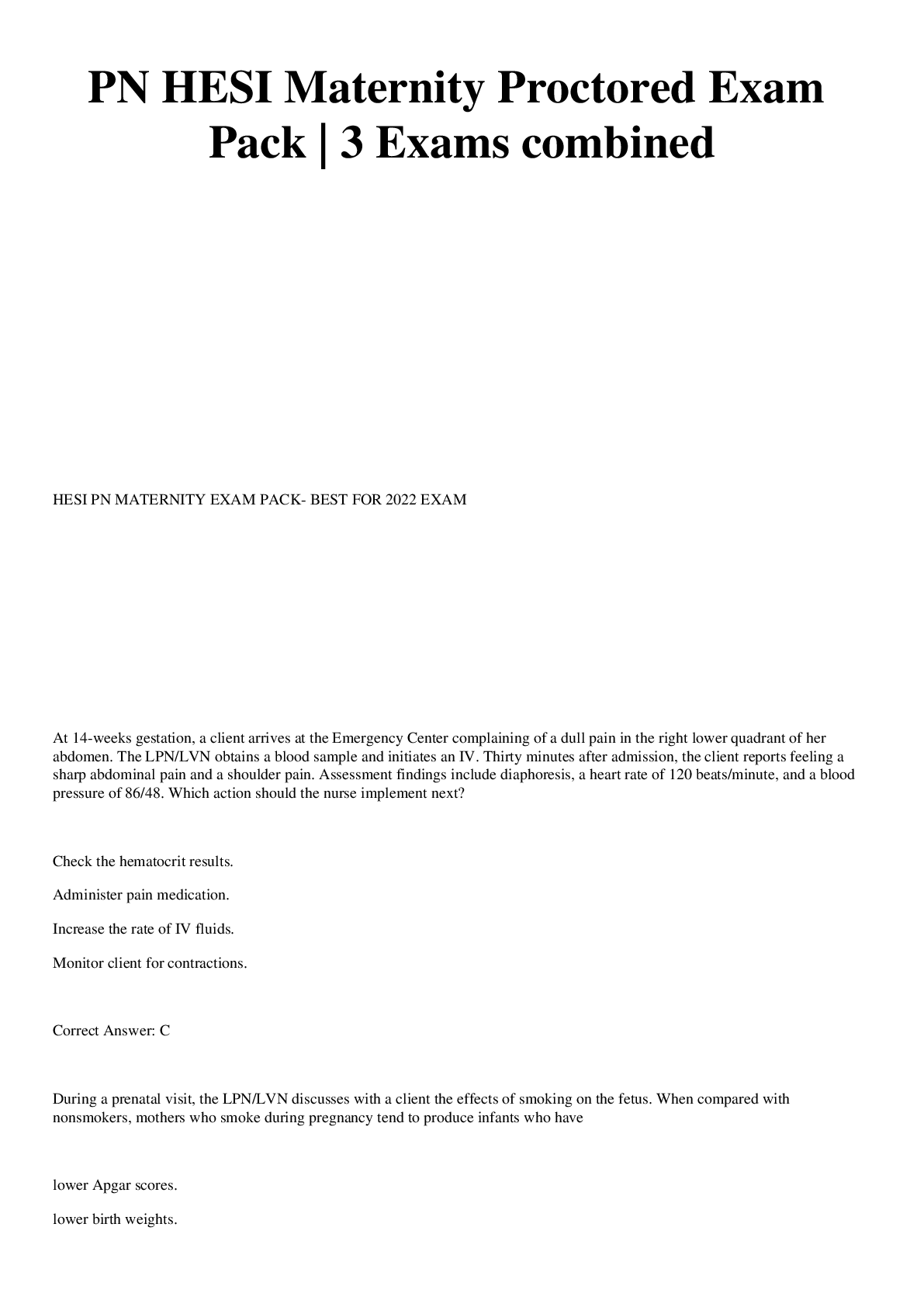
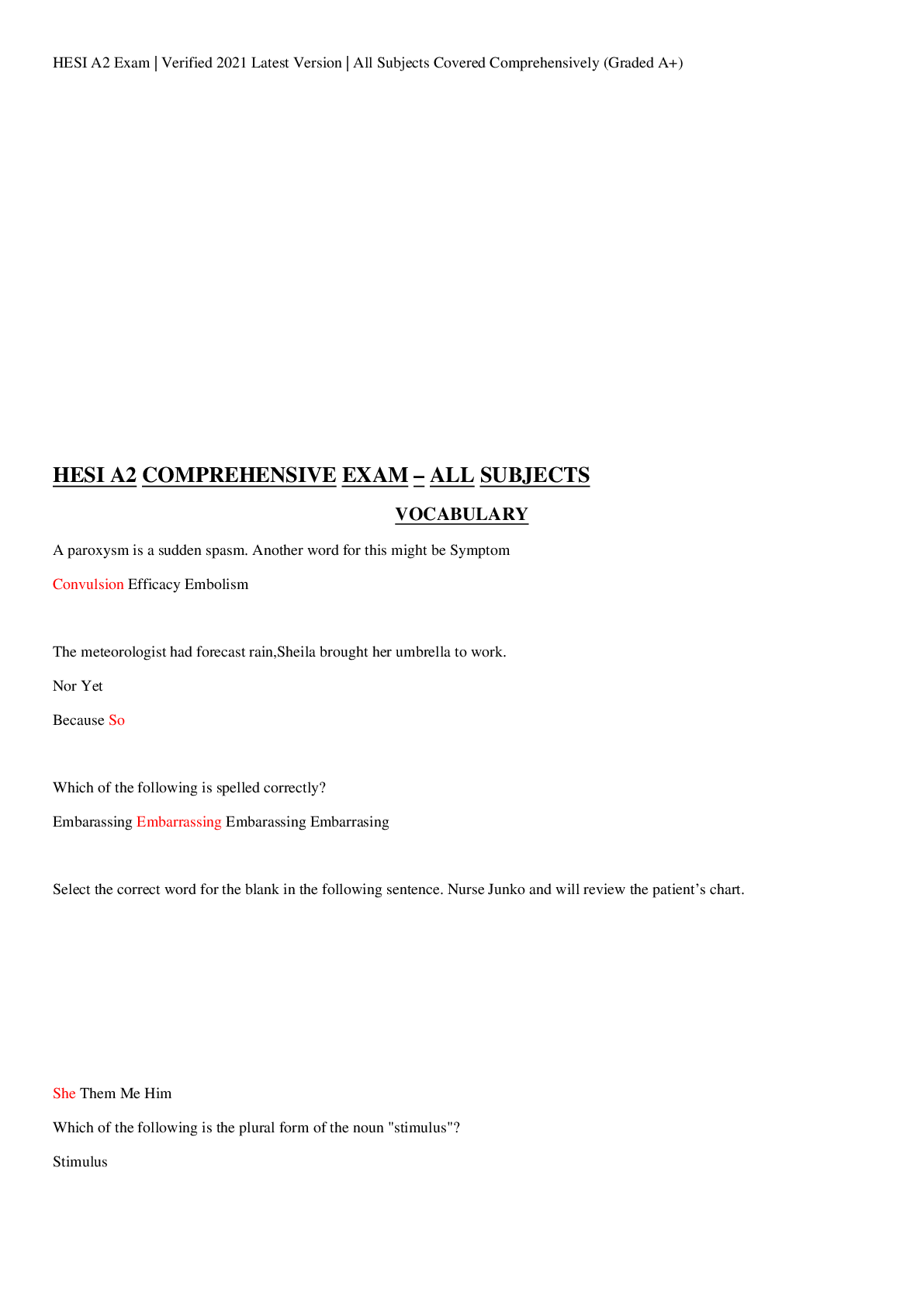
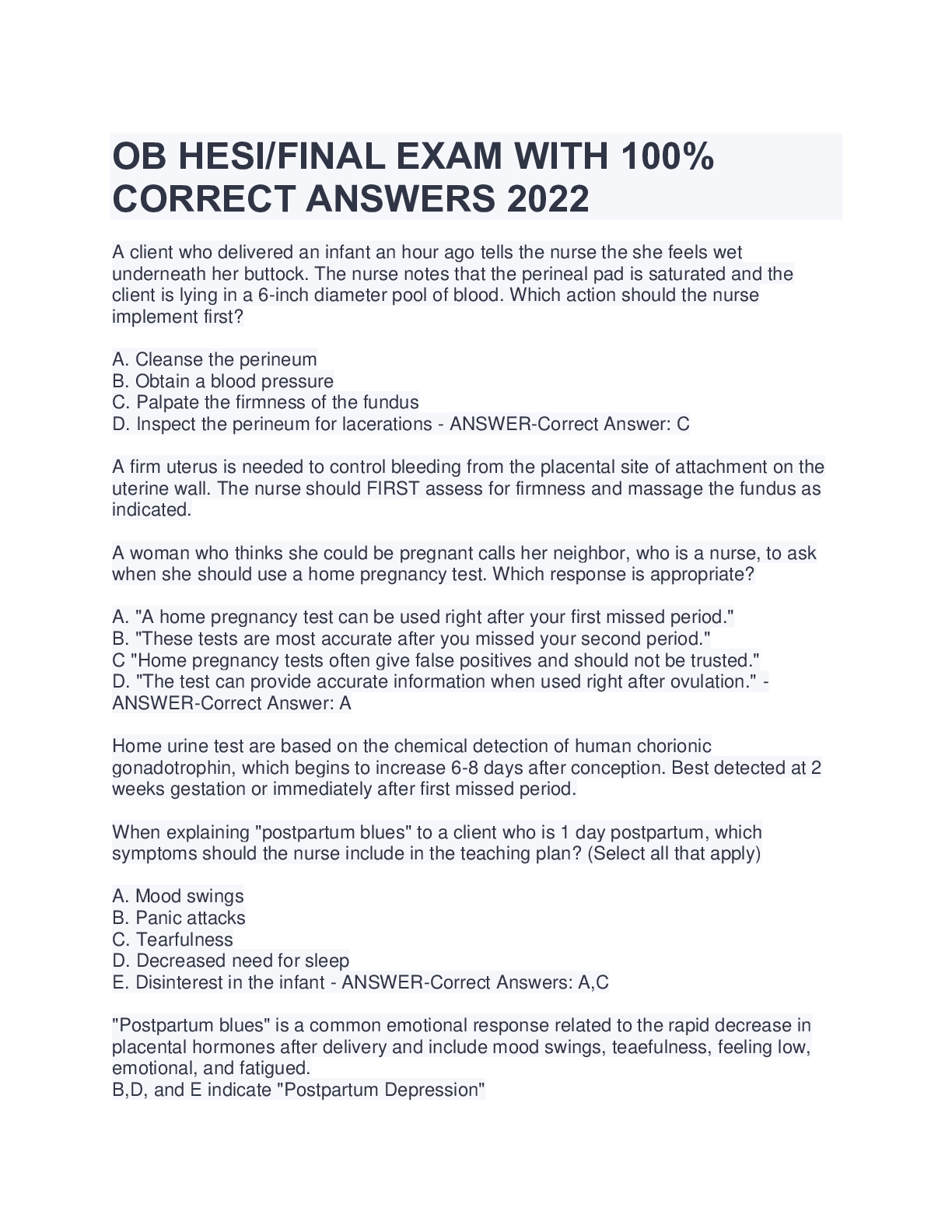
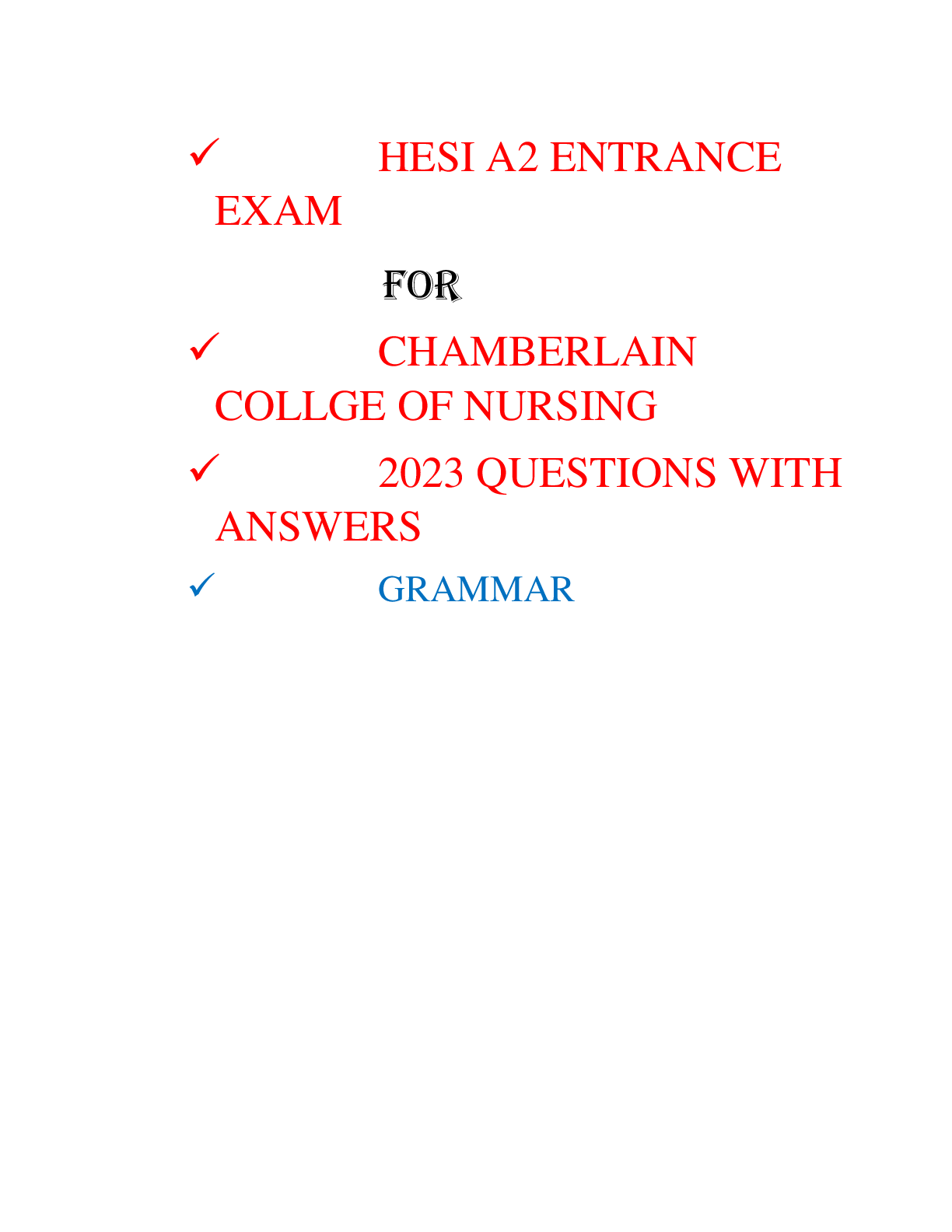
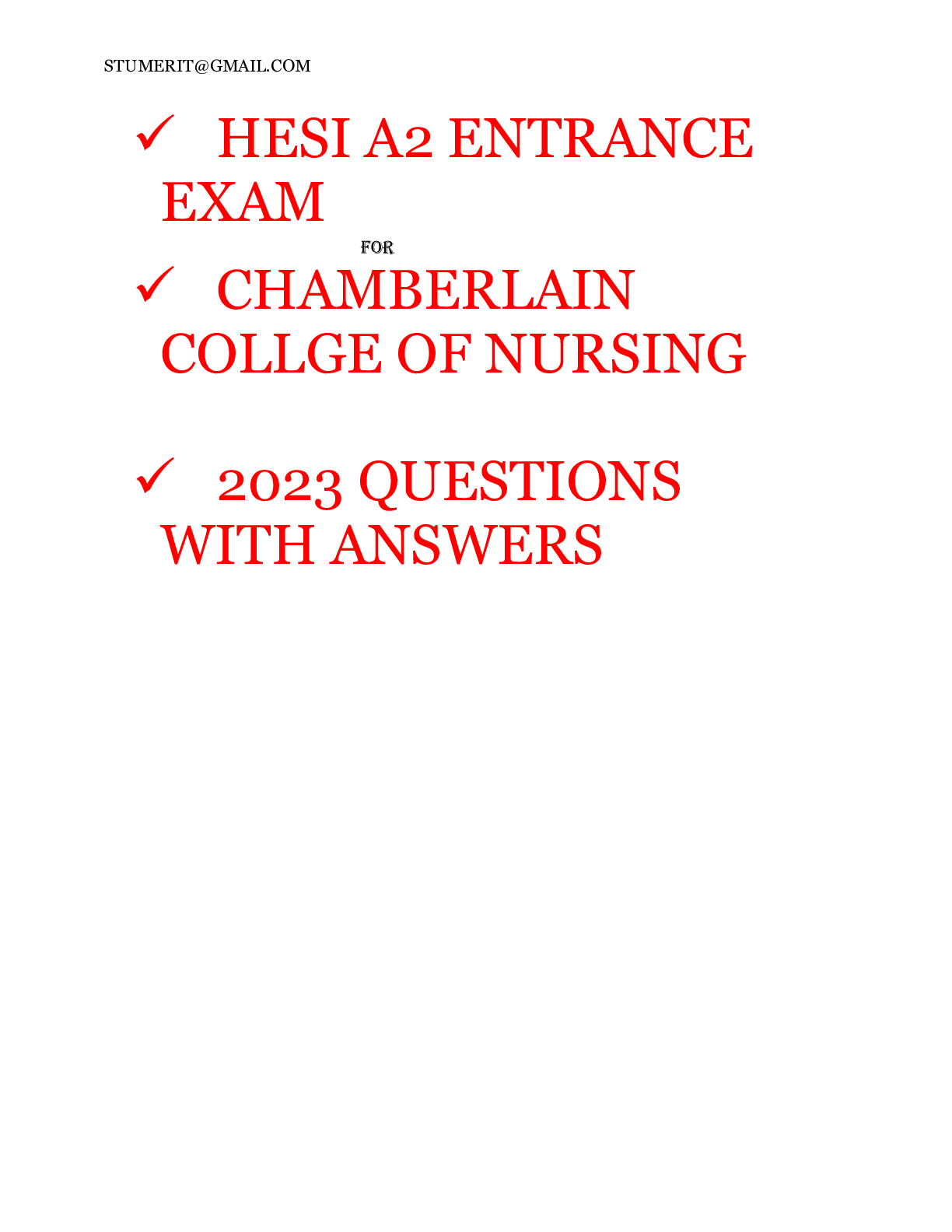
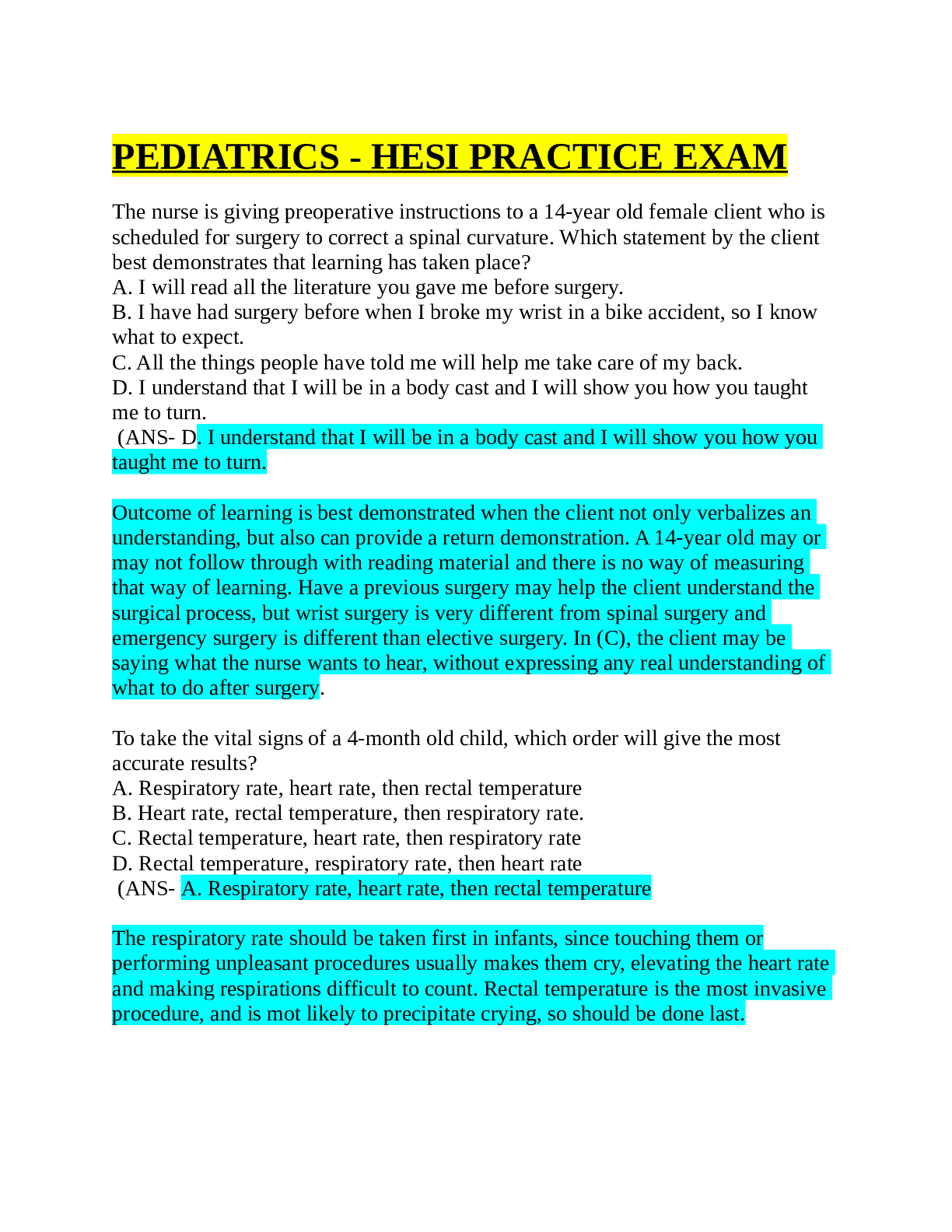
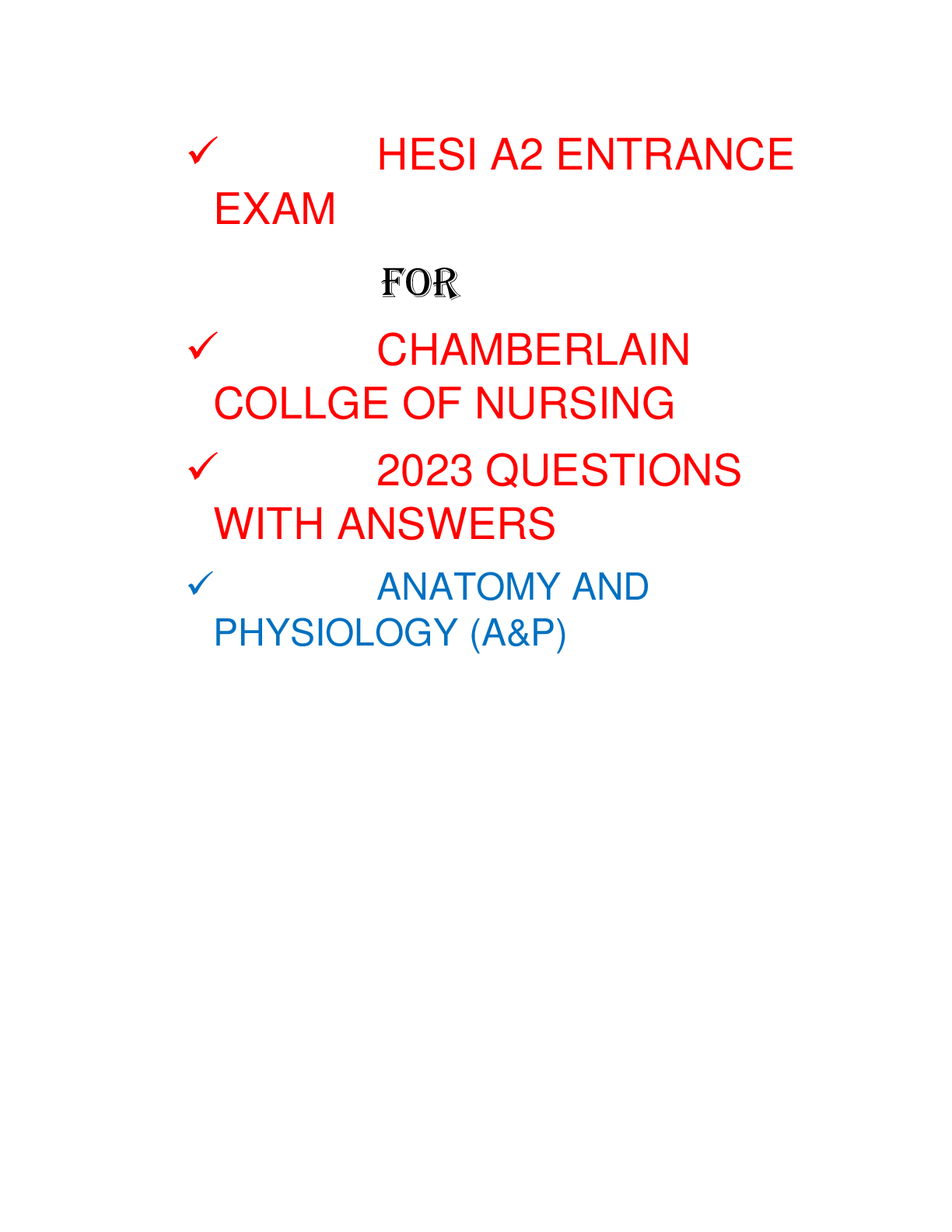

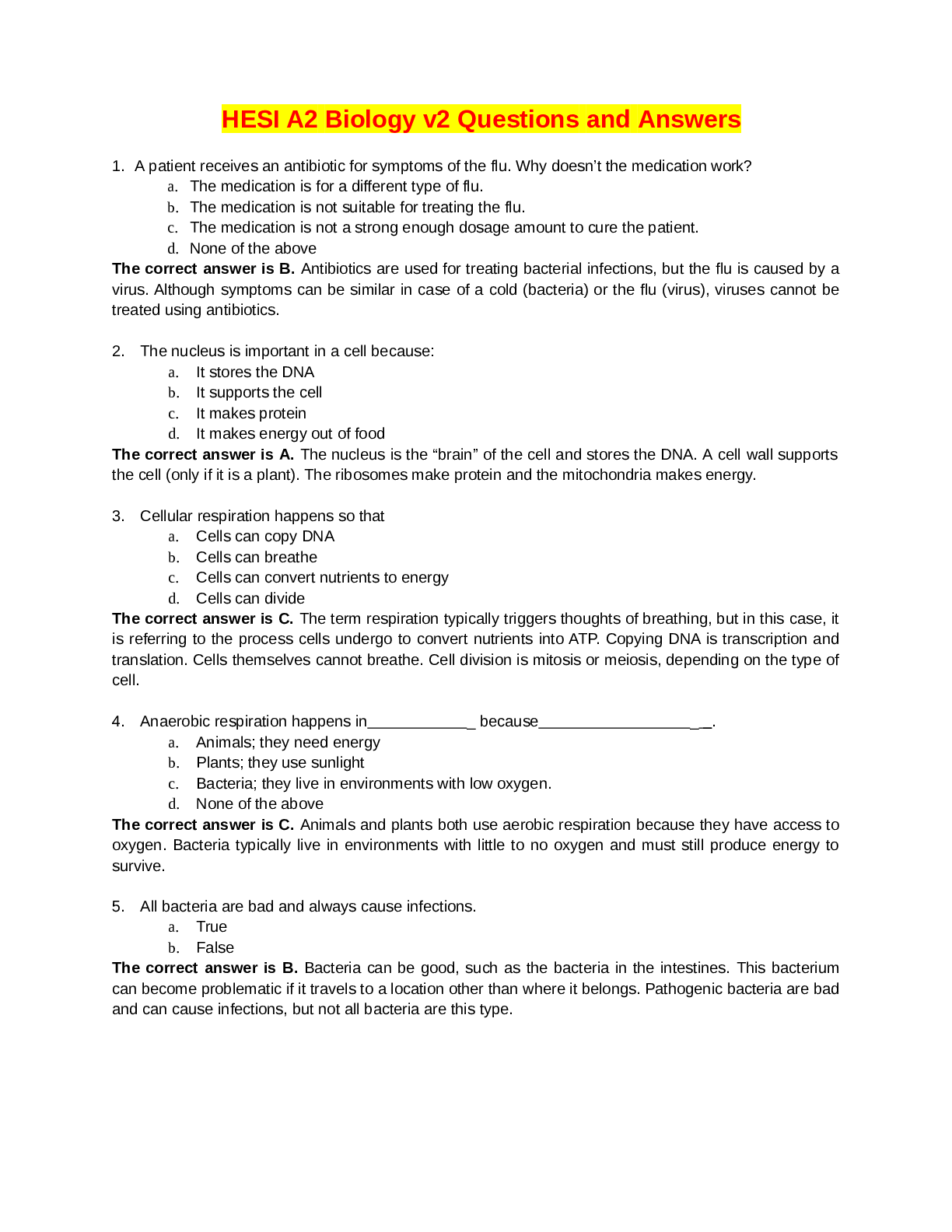
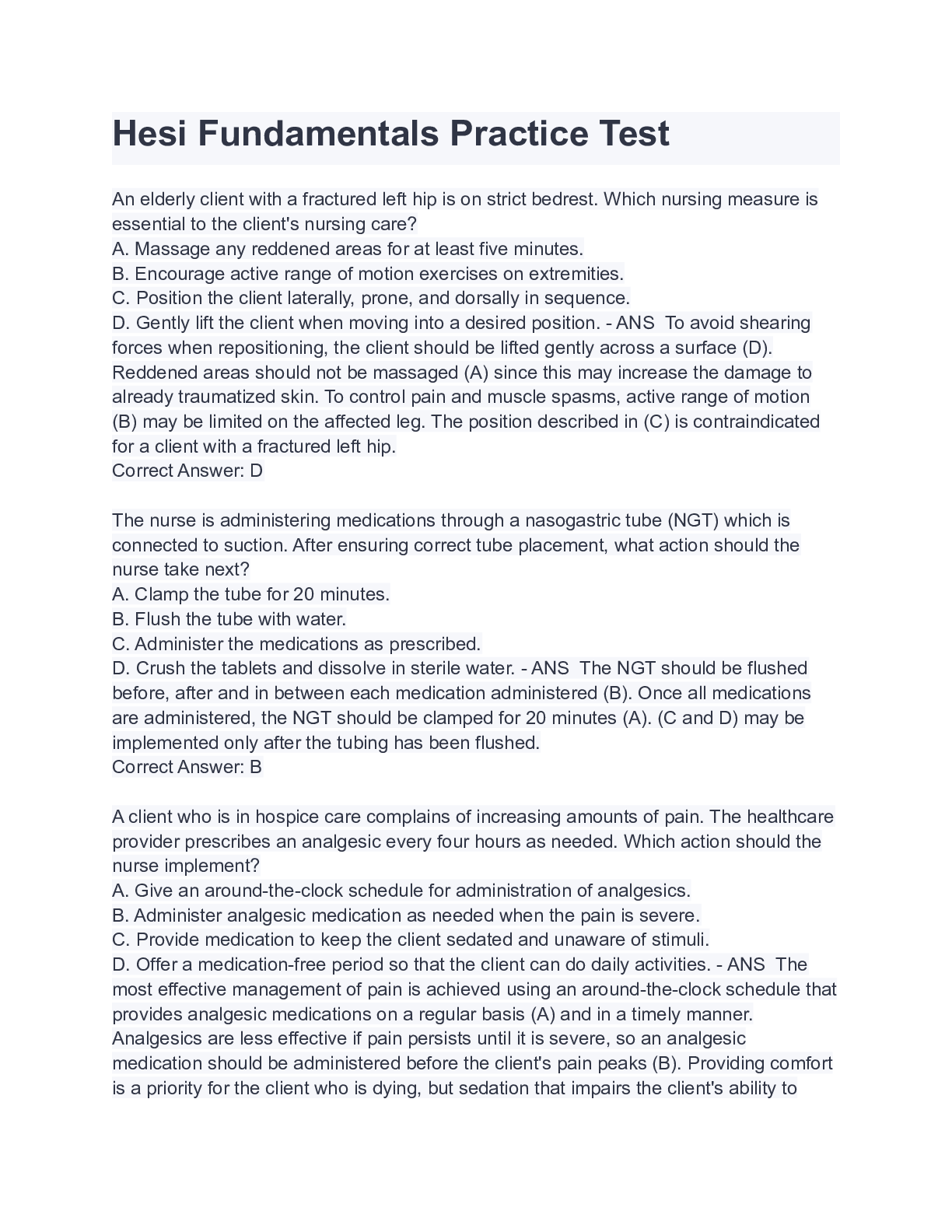

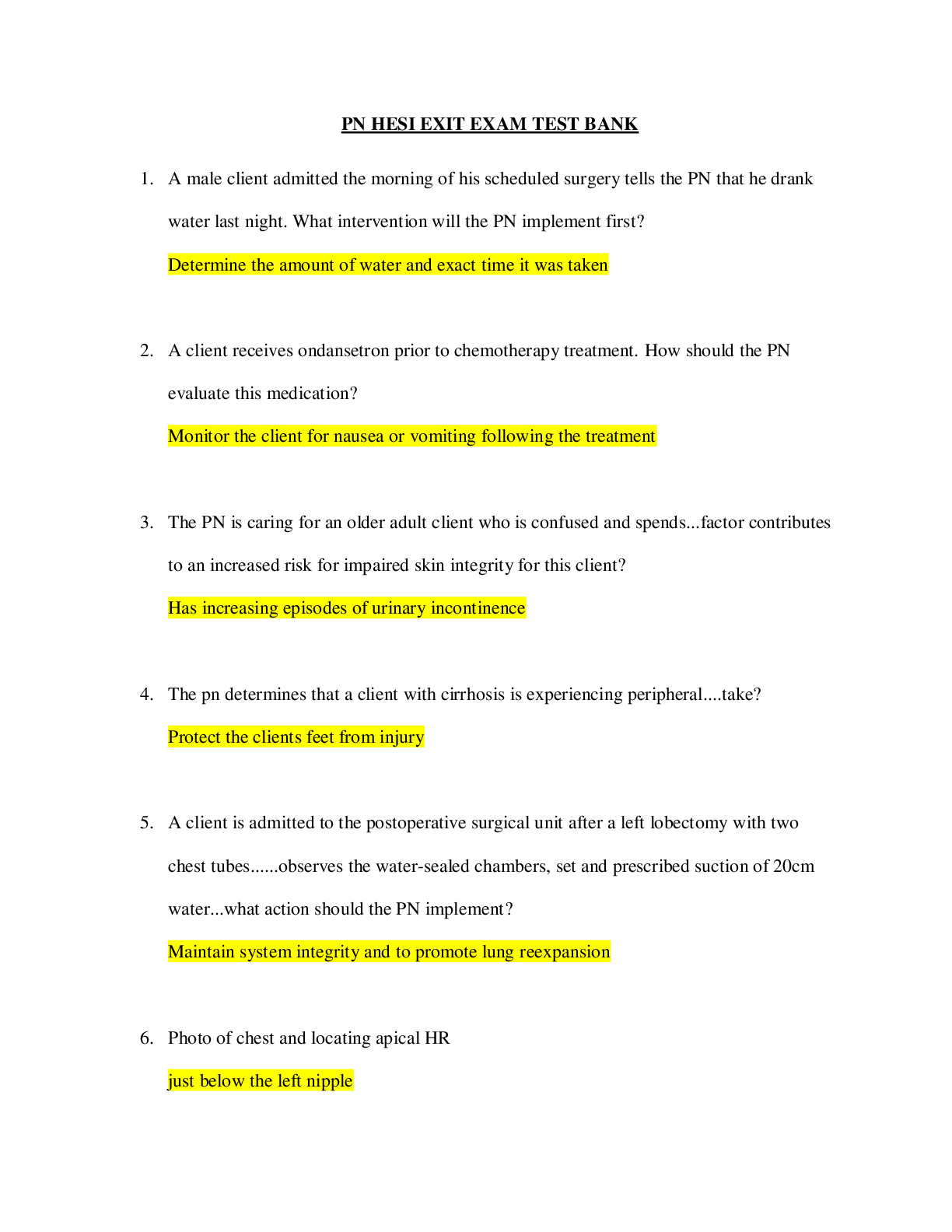
 Latest Questions and Answers with Explanations, All Correct Study Guide, Download to Score A.png)
 (2021 Latest Update) (A Graded) Questions and Complete Solutions with Explanations.png)
 Latest Questions and Answers with Explanations, All Correct Study Guide, Download t.png)

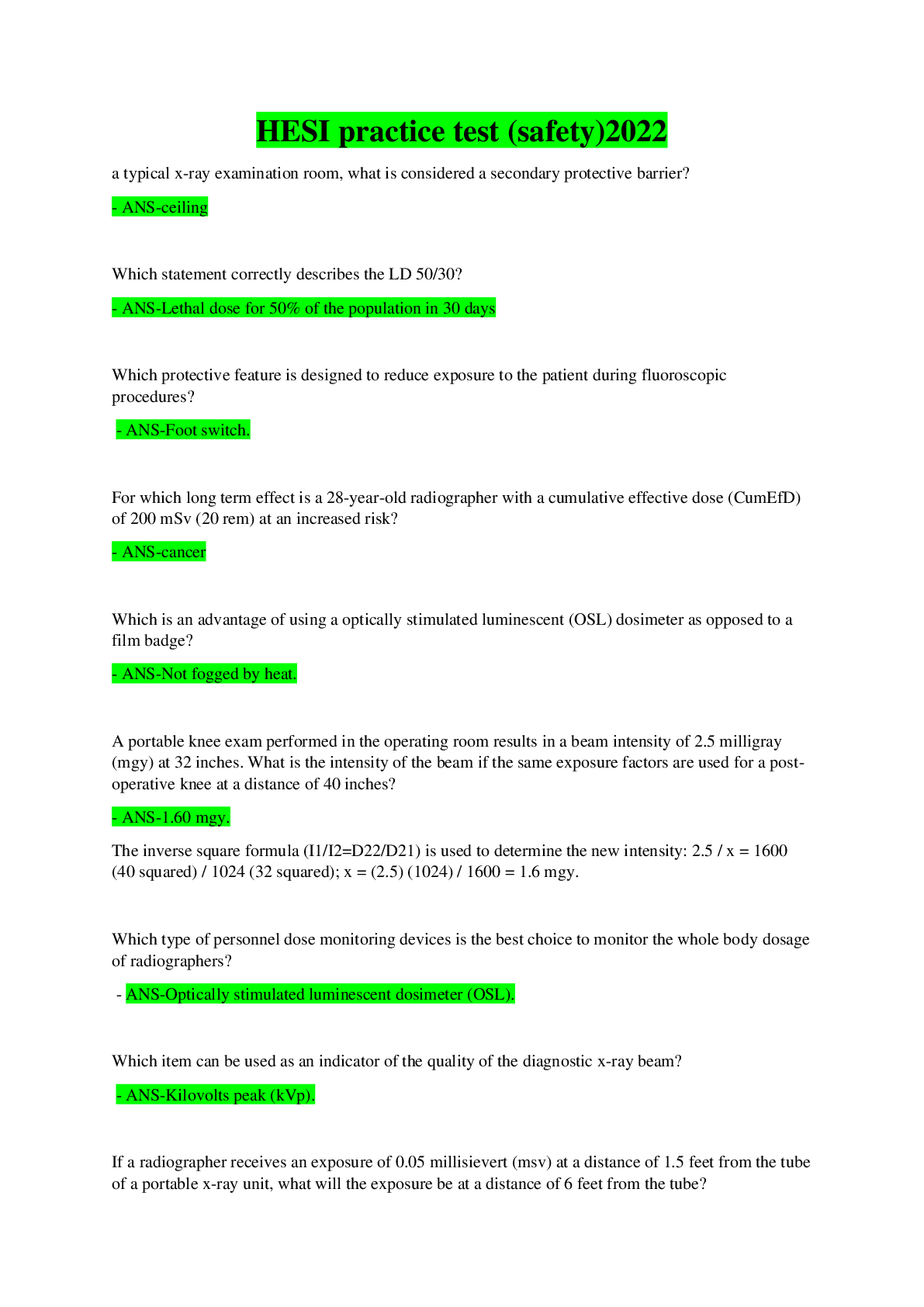




 (1).png)



